Fixing up a Pioneer CT-W404R Dual Cassette Deck

I've been hoarding a tower of broken tape decks for some years now. With the intention of restoring them and getting more people listening to cassettes. While I was in Maui it came to my attention that my friend that helped bring us there and hooked us up with a killer condo on the beach didn't actually own a tape player. Besides this fact he proceeded to show me is huge collection of cassettes with a large part being ones that I have made. So when it came time to start thing about Xmas gifts for my friends and family. I got the idea to try him my island friend out and took a look at the tower of decks collecting dust in the corner of my office. I picked out this Pioneer CT-W404R deck and decided that if I could get it working I would send it to him and his wife as a gift.
The first step was to diagnose what is actually wrong with this deck. On first tests Deck I played correctly in the standard direction, but on first try I got movement but no sound from Deck II but on quick inspection it was easy to see why. The tape head was super dirty, so I used some 91% Isopropyl alcohol and a q-tip to clean the head and magically sound came out. Deck II played fine in the standard direction and in the reverse direction but I discovered that Deck I had low volume playing in the reverse direction. Another interesting thing about this deck is that Deck I is actually the slave deck and all the record controls are on Deck II making it the master deck.
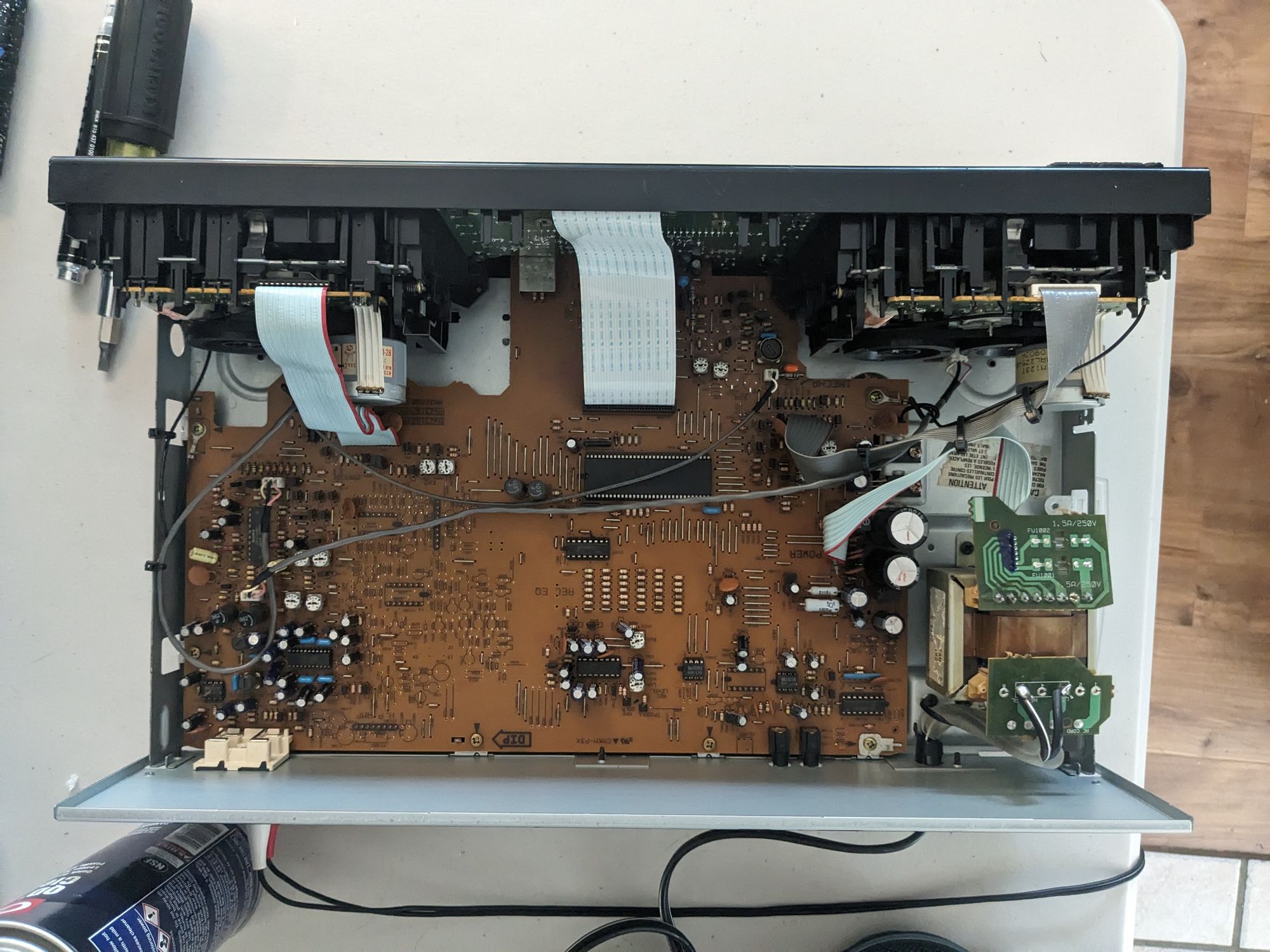
This deck is super easy to work on with everything being modular and its easy to get to the belts to replace them. In this case the belts on both decks were completely fine and didn't need replacing.

I also used my calibration tape to check the speed on both decks. This model has a cool diagnostic mode you enter by pressing the TIME/COUNT + RESET(on Deck I) + PAUSE(on Deck II) the display changes to this.
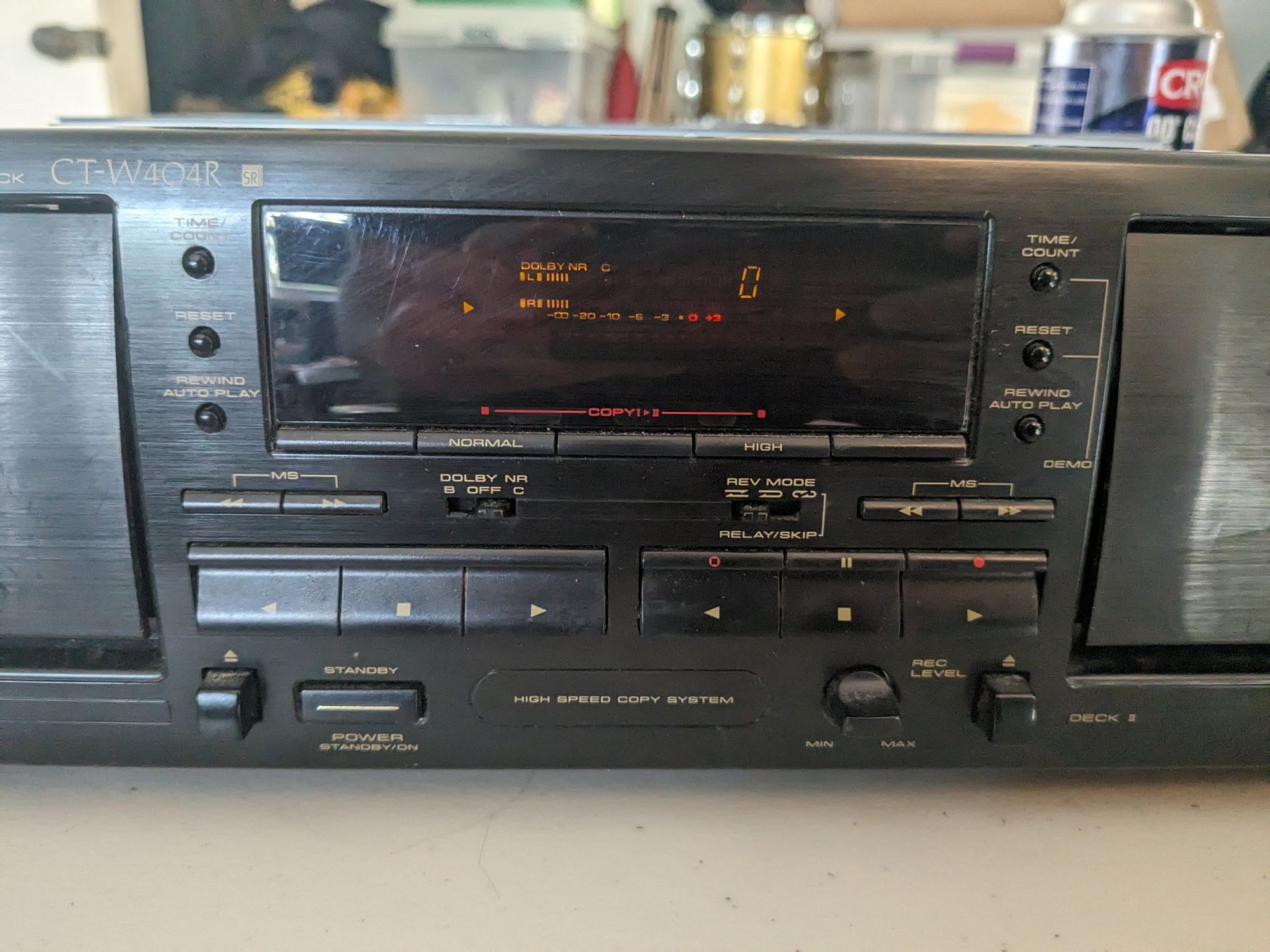
when in this mode you can use the play button to play at normal speed or the fast forward button to play at high speed. Using the test tape that has a 440 HZ tone(or and A note) so you can use a spectrum analyzer or a guitar tuner to adjust the speed until you get the correct result.
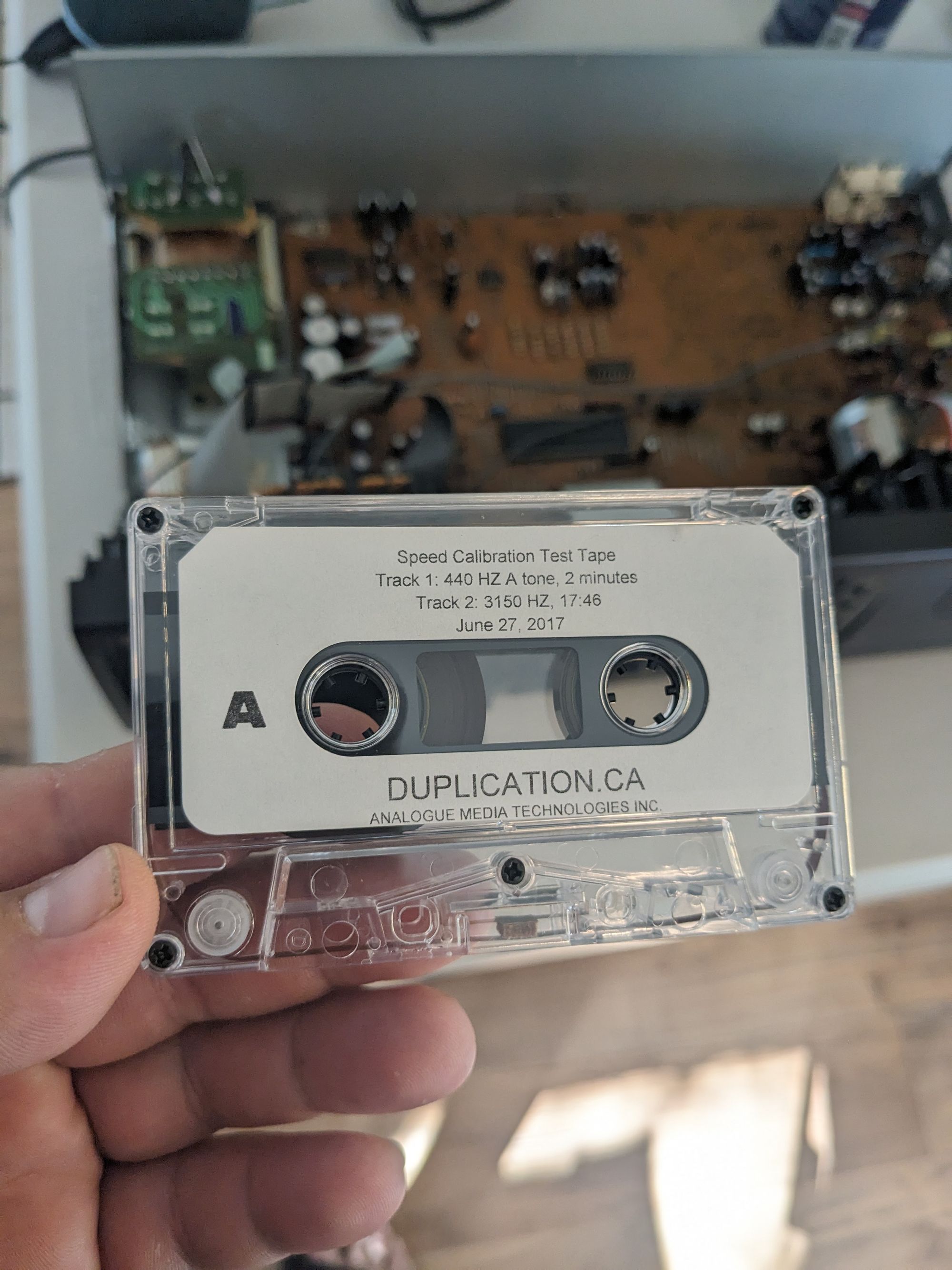
Lucky for me this deck was spot on for speed in normal and high speed so I didn't need to make any adjustments but if I had. I would have to use these points on the board to do so.
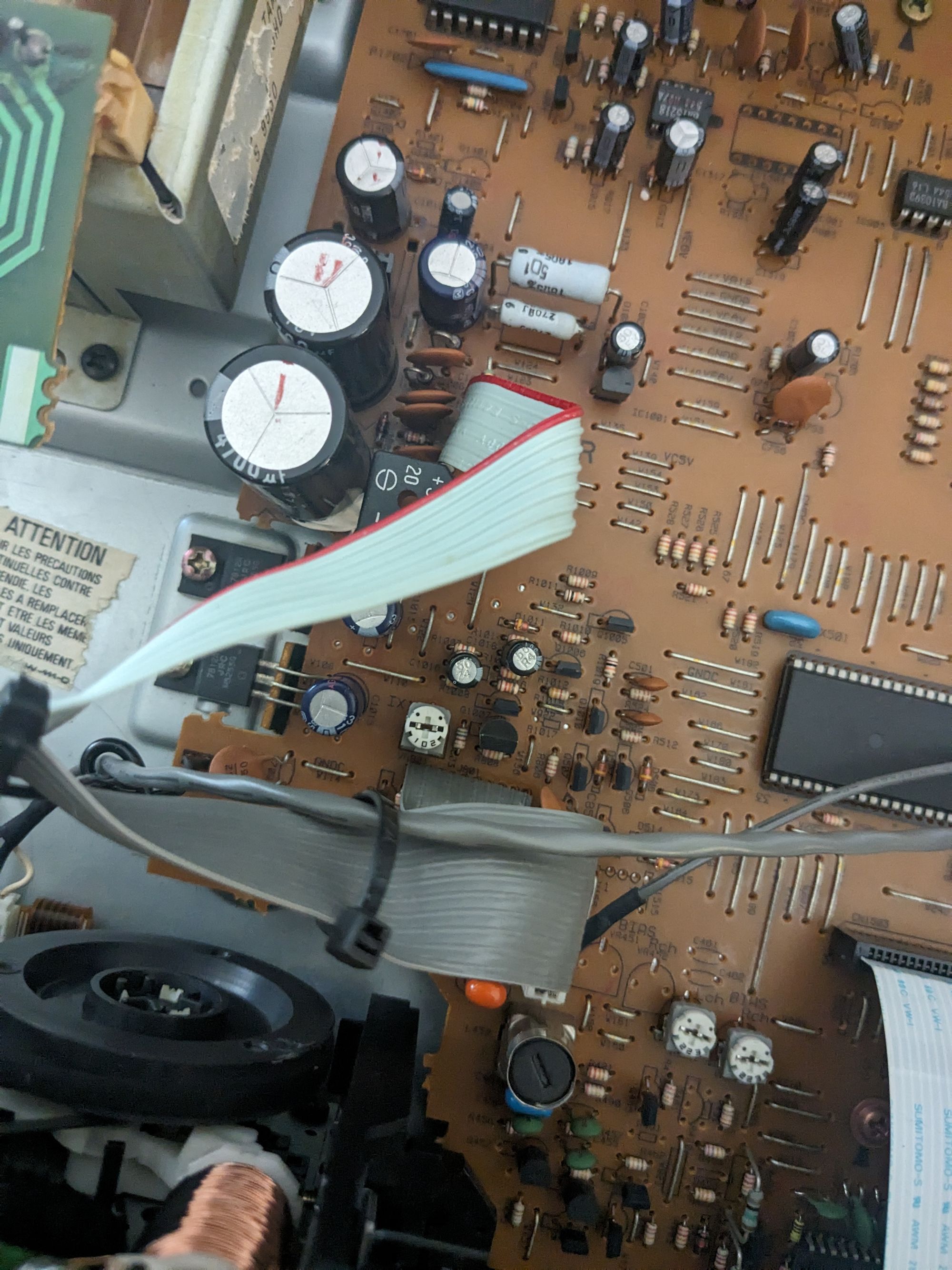
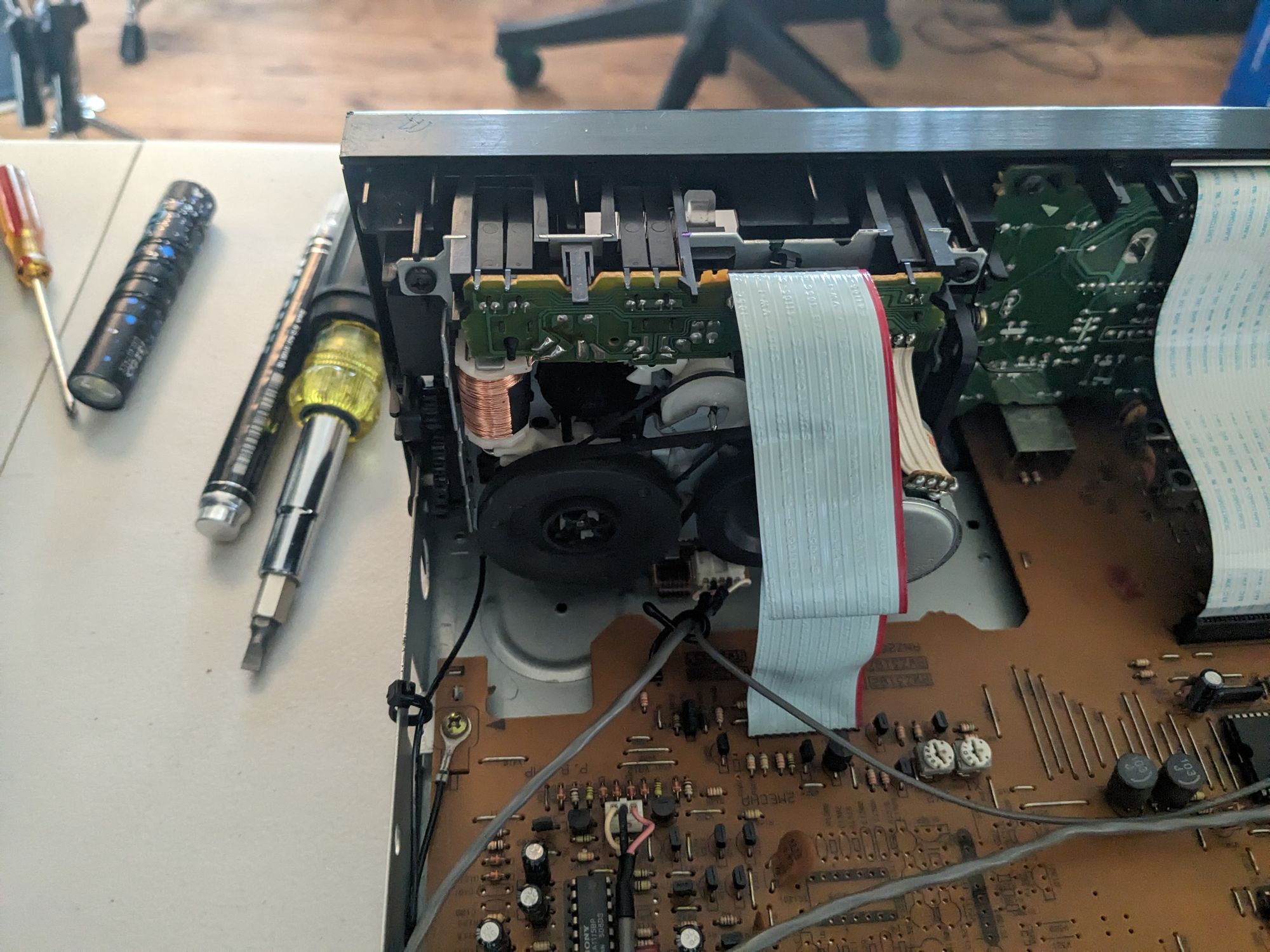
I tinkered around with the deck for awhile trying to fix the Deck I in reverse volume level but I was unable to figure it out. I'm going to chalk this up to just a quirk of this deck. The likelihood of my friend using that feature are extremely low. So I decided that I would just document and call it good. Some other cool features of this deck are you can chain multiple decks together to make a dubbing tower much like my own Tower of Dub. You can see the input/output for control in the photo below. You will also notice that this deck was manufactured in 1996 back when quality cassette players were still being made.
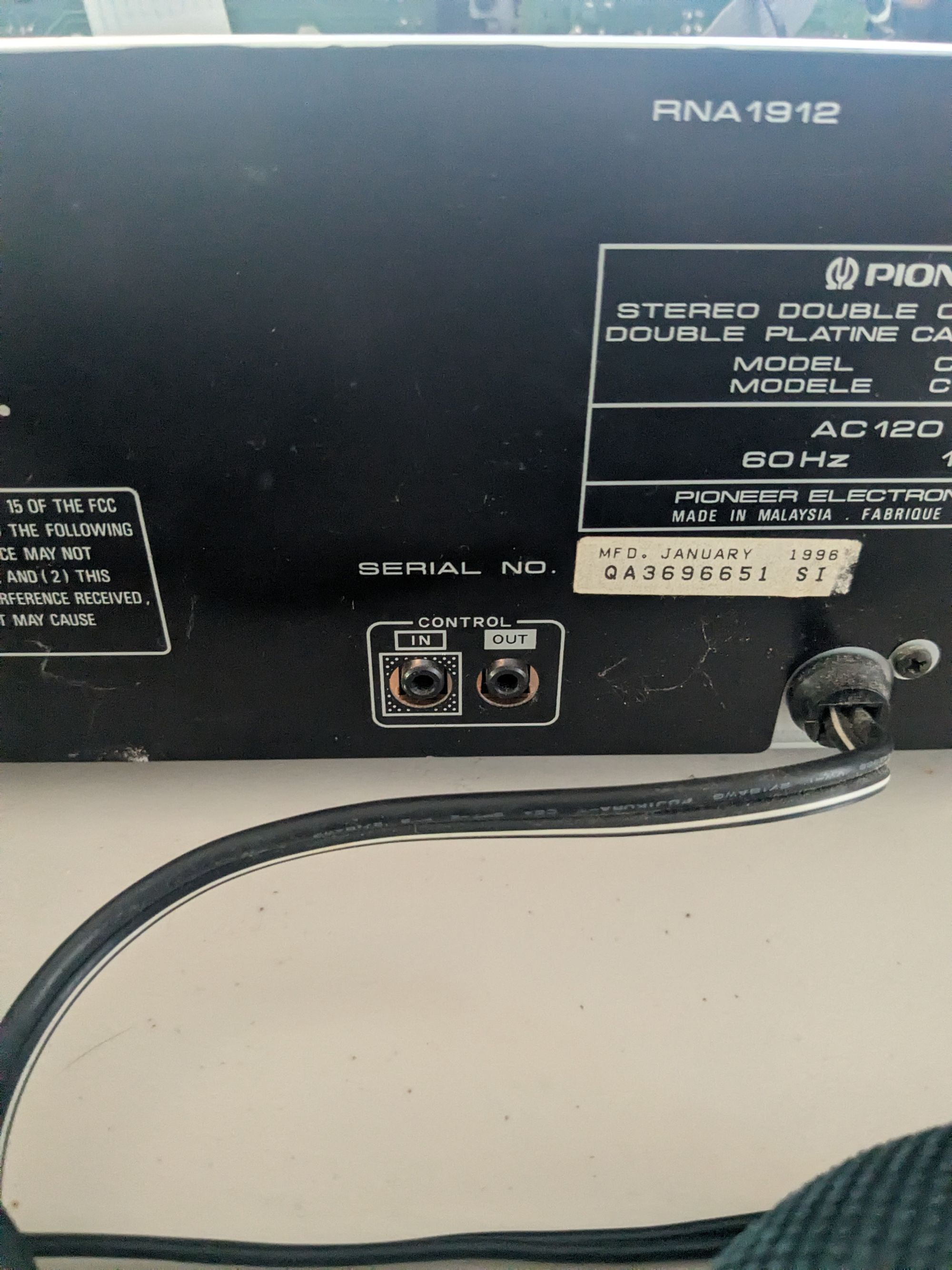
I marked inside lid and made note of the quirk of this deck and date. A fun little easter egg for the next person to open this bad boy up.
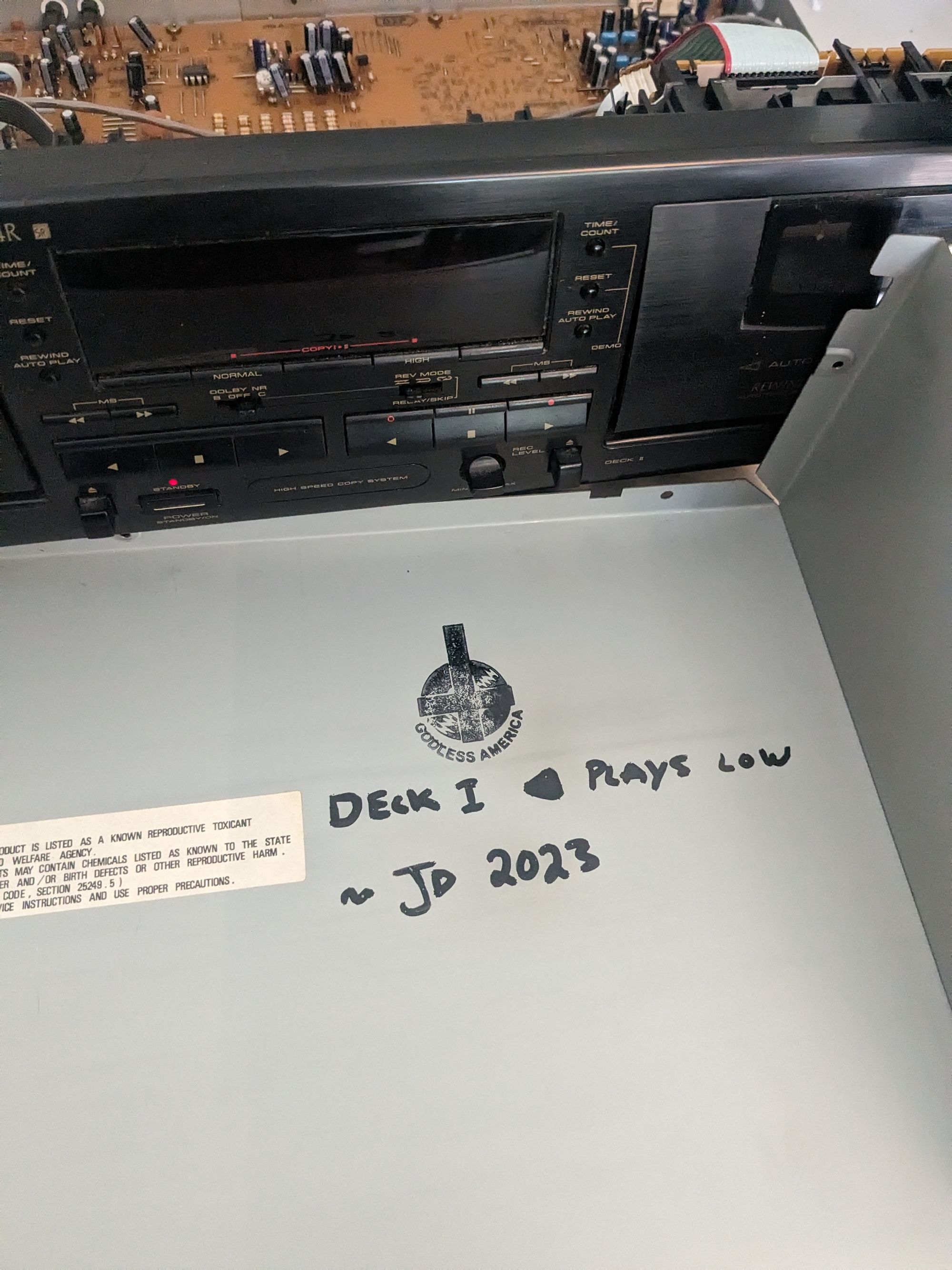
Now its time to pack this baby up and get this in the mail to my buddy in Maui. This one was a pretty easy fix it just needed some cleaning really. This has encouraged me to pick another deck from the pile and see if I can't bring it back to life. So stay tuned because I plan to document that process too.